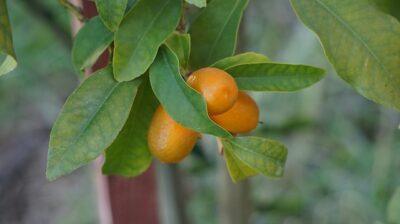When skies hang low and gray, few things brighten an indoor corner quite like a citrus tree. Laden with camouflaged limes or unignorable lemons, modern dwarf varieties mean that growing citrus is no longer the exclusive purview of the fortunate few who make their homes in places like Florida.
Of course, while it’s possible to grow citrus almost anywhere assuming you have a warm, well-lit, place for it, coaxing indoor versions of these outdoor staples to thrive and fruit requires special attention. Here are some helpful tips for growing citrus in containers.
1. Opt for acidic
If your goal is to grow actual fruit, rather than simply a lovely flowering tree, then picking the right variety to start with will greatly improve your odds of success. For best results, stick with fruits that are decidedly acidic, such as improved Meyers lemons, kumquats, and ponderosa limes and avoid the sweeter citrus options like sweet oranges and grapefruits.
2. Pick the right pot
Even dwarf variety trees intended for growing in containers require a decent amount of room in order to thrive. Plants that are 2-3 years old will do OK in 12-inch diameter (5-gallon) pots. Four- to five-year-old plants will need something closer to a 24-inch diameter (15-gallon) pot.
Need Non-GMO Seeds? Get Them From A Company You Can Trust! [2]
Although pots can be made of almost any material, note that plastic ones do tend to warm the roots more than other materials, potentially damaging them, while wood ones are more prone to rot.
3. Not all dirt is created equal
While at first glance soils may look similar, it’s important to give your new container-bound best friend a good place to put down roots by using quality potting soil. Potting soil is formulated to handle the increased demands of container plants, and it drains significantly better than even good caliber gardening soil.
When planting, keep the root crown just above the surface of the soil and the top of the leggy root mass just below the surface.
4. Keep dish soap around
Few things are as important to your growing citrus tree as appropriate moisture. Make sure the bottom of the pot allows for good drainage, and then wait for the surface of the soil to dry out between watering. When watering, thoroughly soak the root ball.
Sometimes, you may notice that the water seems to go straight through the soil without actually soaking the root ball. This happens because, as it dries out, the root ball shrinks and pulls away from the edges of the container, allowing water to sneak through in the gaps. To remedy the situation, simply add a few drops of mild dish soap to the exposed root crowns before watering — it will help the water adhere enough to re-soak the root ball.
5. Fertilizer it, slow and steady
Citrus plants are strikingly susceptible to nutrient deficiencies, especially when it comes to iron, manganese and zinc. These deficiencies will cause leaves to yellow and the plant to suffer.
Get Out Of The Rat-Race And Make Money Off-Grid! [4]
Potting increases the stress on citrus soils because the necessary amount of drainage can flush away soil nutrients even faster. To counteract these effects, select slow-release, chelated fertilizers to help keep your indoor citrus well-nourished.
6. Watch the lighting
Most homes are darker, warmer and drier (especially in the winter) when compared to a citrus tree’s natural surroundings. Keep your plant feeling right at home by upping the light levels and the humidity. Cool, well-lit spaces, like a partially heated sunroom, are especially well-suited for growing indoor citrus. Grow lights are another possible addition sure to be loved by lemons, limes and all their bright-flavored buddies.
7. Watch out for suckers!
Finally, keep an eye out for suckers. Most dwarf citrus varieties have been grafted onto borrowed root stock. Often, the root stock will try and send up growth of its own. Known as “suckers,” these little branches will steal away nutrients and energy from the rest of the tree and should be removed as soon as spotted. To preserve the health of the tree, carefully cut away any branches that appear below the graft scar, typically located just a few inches above the crown roots.
Few things taste better than fresh citrus, and a potted citrus tree is sure to add beauty and interest to any home. Use these tips to help get started growing container fruit that will make the grocer’s produce aisle jealous.
What advice would you add? Share your indoor growing tips in the section below:
Discover The Secret To Saving Thousands At The Grocery Store. Read More Here. [5]


